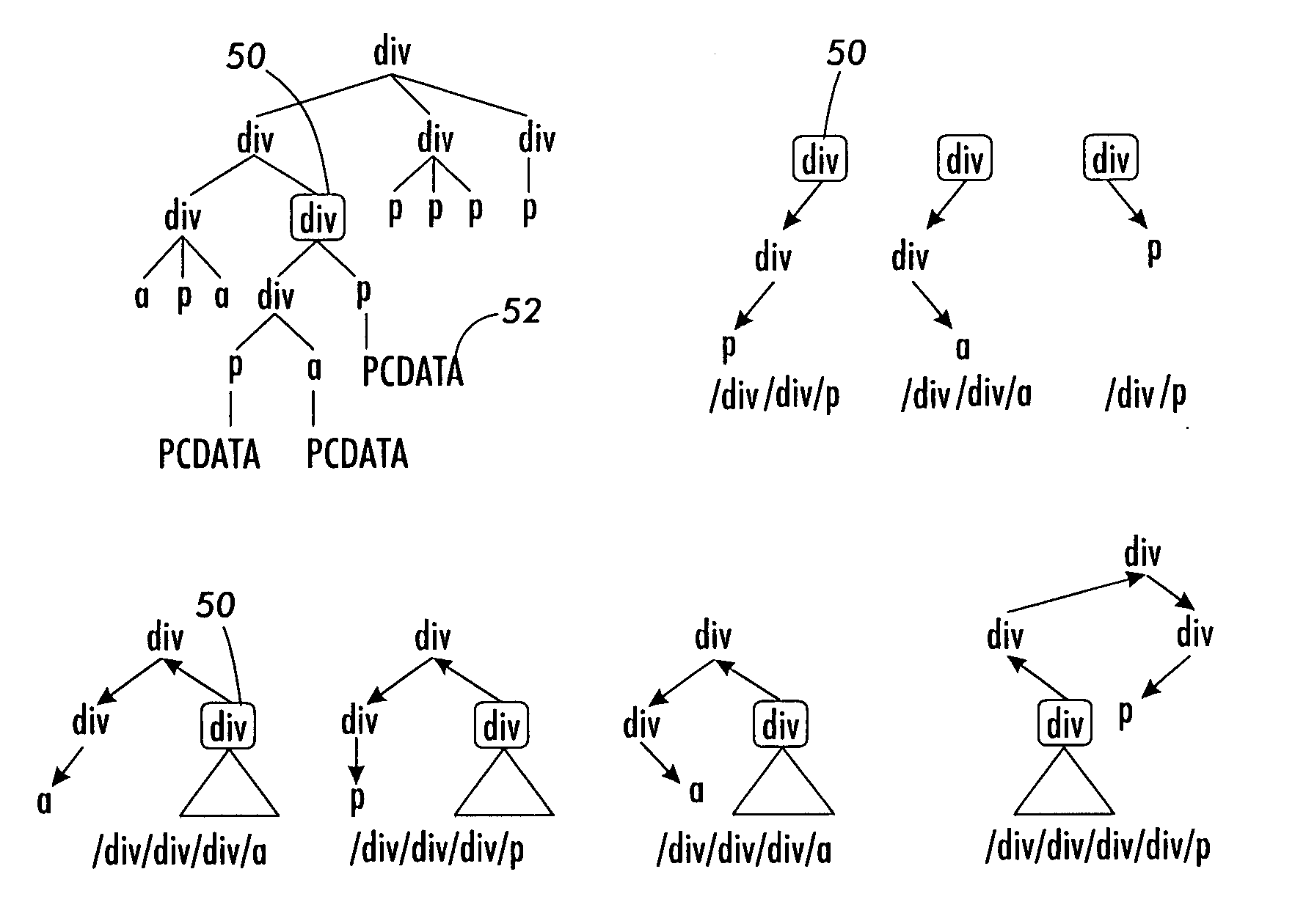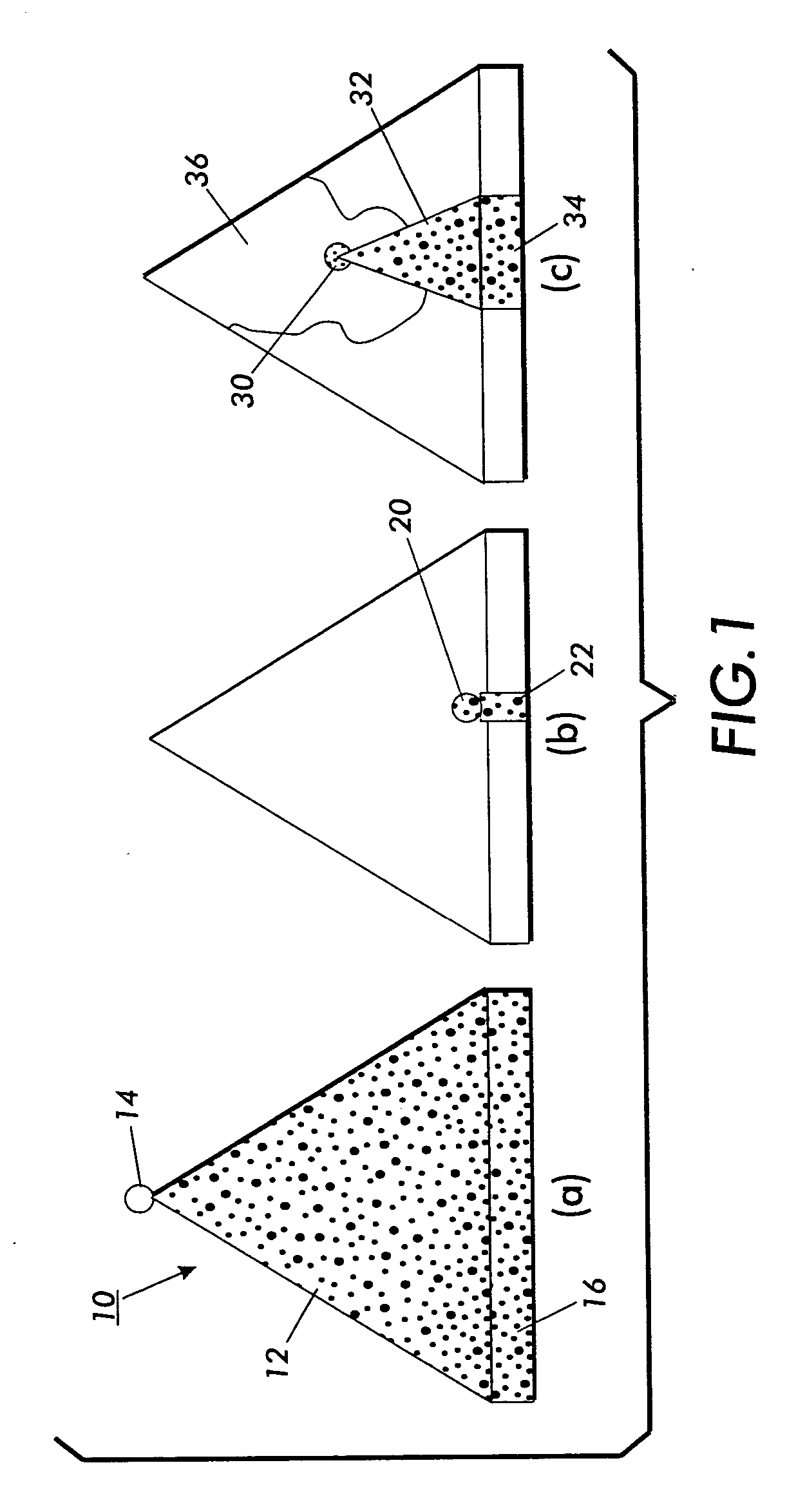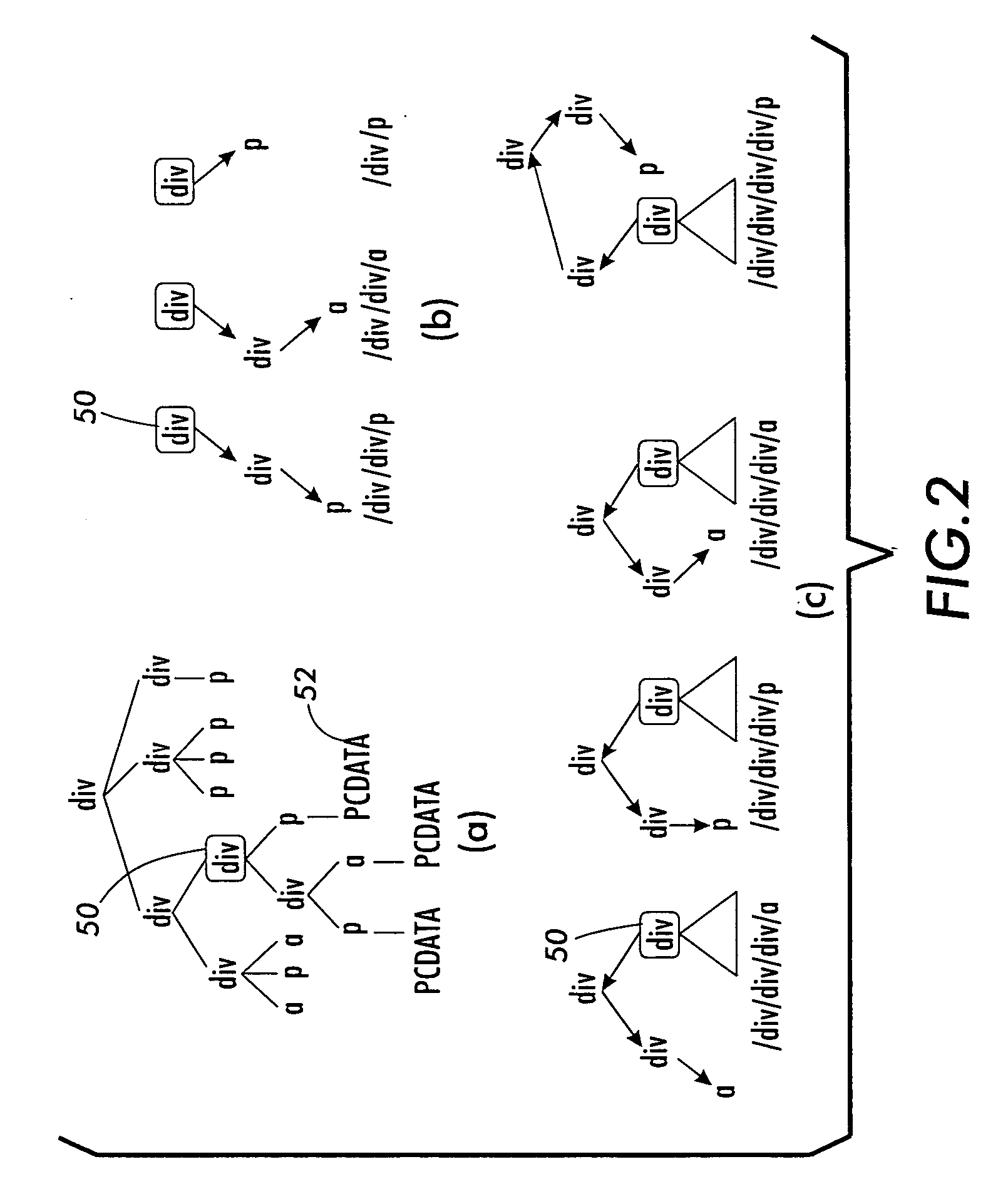Method for classifying sub-trees in semi-structured documents
a semi-structured document and sub-tree technology, applied in the field of structured document systems, can solve the problems of uncoherent use of html tags and attributes, uneasy immediate use, etc., and achieve the effect of better organization
- Summary
- Abstract
- Description
- Claims
- Application Information
AI Technical Summary
Benefits of technology
Problems solved by technology
Method used
Image
Examples
Embodiment Construction
[0029] The purpose of classifying documents is so that they can be better organized and maintained. Documents A (FIG. 6) stored electronically in a database are classified for purposes of storage in a folder in the database (not shown). Typical classifications are as technical documents, business reports, operational or training manuals, literature, etc. Automated systems for determining an accurate classification of any such document primarily relies on the nature of the document itself. The subject development is primarily applicable to semi-structured documents.
[0030] With reference to FIG. 1a, such documents are comprised of sub-trees 10 having a document structure 12 originating from a document node 14. The document content 16 comprises the constituent text, figures, graphs, illustrations, etc. of the semi-structured document. FIG. 1b comprises an illustration of the simplest of sub-trees comprising a leaf sub-tree having merely a root node 20 and a leaf (a terminal node of a ...
PUM
 Login to View More
Login to View More Abstract
Description
Claims
Application Information
 Login to View More
Login to View More - R&D
- Intellectual Property
- Life Sciences
- Materials
- Tech Scout
- Unparalleled Data Quality
- Higher Quality Content
- 60% Fewer Hallucinations
Browse by: Latest US Patents, China's latest patents, Technical Efficacy Thesaurus, Application Domain, Technology Topic, Popular Technical Reports.
© 2025 PatSnap. All rights reserved.Legal|Privacy policy|Modern Slavery Act Transparency Statement|Sitemap|About US| Contact US: help@patsnap.com



